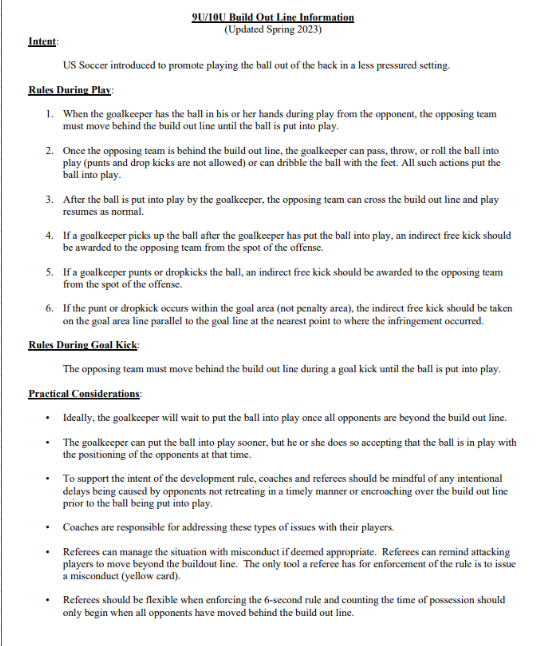Introducing the rules of the game for club soccer involves covering the fundamental aspects that all players, coaches, and parents should understand. Here’s a basic overview:
1. Objective of the Game
The primary goal of soccer is simple: score more goals than the opposing team. A goal is scored when the entire ball crosses the goal line between the goalposts and beneath the crossbar.
2. The Field of Play
- Size and Layout: The size of the field can vary, especially for younger age groups, but it typically includes a rectangular grass or turf field with two goals at each end.
- Markings: The field is marked with lines that define the boundaries, penalty area, goal area, center circle, and corners.
3. The Players
- Team Composition: Each team fields a set number of players, usually 11 for full-sided games (including the goalkeeper), but smaller teams are common for younger age groups (e.g., 7v7, 9v9).
- Substitutions: Clubs often have specific rules for substitutions, which can vary between leagues. Generally, substitutions can be made at specific points during the game.
4. Game Duration
- Match Length: The game is divided into two halves, with a break in between. The length of the halves depends on the age group, ranging from 20 minutes for younger players to 45 minutes for older age groups.
- Extra Time: In certain competitions, if the match is tied, extra time or penalty shootouts may be used to determine a winner.
5. The Ball
- Size: The size of the ball varies by age group. For example, younger players typically use a size 3 or 4 ball, while older players (U15 and up) use a size 5 ball.
6. Basic Rules of Play
- Kick-Off: The game starts with a kick-off from the center circle, and the ball must move forward.
- Offside Rule: A player is offside if they are nearer to the opponent’s goal line than both the ball and the second-last defender when the ball is passed to them.
- Fouls and Misconduct: Physical contact like tripping, pushing, or handball (except by the goalkeeper within their penalty area) is penalized. Depending on the severity, fouls may result in free kicks, penalty kicks, yellow cards (warnings), or red cards (ejection from the game).
- Free Kicks: These are awarded after certain fouls. Free kicks can be direct (can be scored directly) or indirect (another player must touch the ball before a goal can be scored). The opposing players can be enforced to remain 10 yards from the opposing player taking a direct or indirect kick.
- Penalty Kicks: Awarded for certain fouls committed inside the penalty area, taken from the penalty mark.
7. Scoring
- Goals: A goal is scored when the entire ball crosses the goal line between the goalposts and under the crossbar. The team with the most goals at the end of the game wins.
8. Fair Play and Sportsmanship
- Respecting the Rules: Players, coaches, and spectators are expected to respect the rules and the officials enforcing them. Referees decisions are final and should be without dissent. NECONN does not tolerate REFEREE ABUSE. Follow this link to learn more.
- Positive Conduct: Encouraging sportsmanship, teamwork, and respect for opponents and referees is crucial for maintaining a positive environment.
This introduction should give you a basic understanding of how club soccer is played. Each club may have additional rules or variations, so it’s essential to familiarize yourself with the specific regulations of your club or league.
Below is an itemized list of the rules agreed upon by our participating clubs regarding rules that should provide useful to you as a coach:


